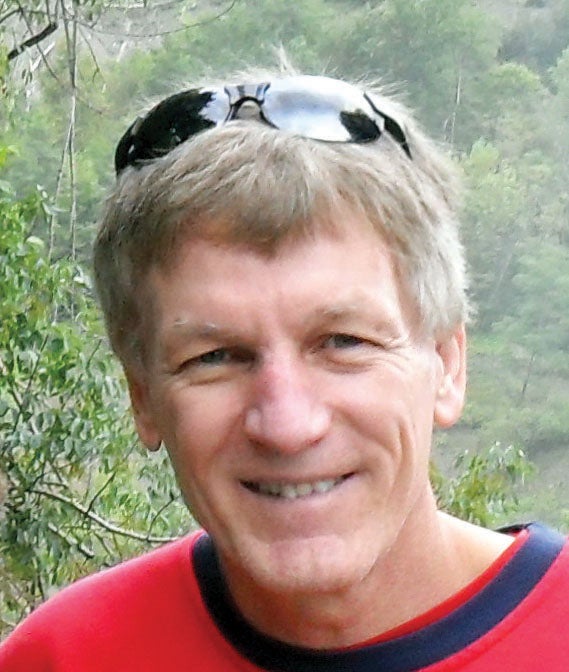Letters to the editor — Nov. 5
Published 12:00 am Thursday, November 5, 2020
|
Getting your Trinity Audio player ready...
|
Reimagining preventive medicine: Bridging environment and health
In 2017, Congressman Roger Marshall of Kansas, a physician poised to win his Senate election this fall, stated that Medicaid recipients “do probably the least preventive medicine and taking care of themselves and eating healthy and exercising” and rack up health costs by “only going to use the emergency room when their arm is chopped off.” Thus, Medicaid is inherently unsustainable due to the irresponsible personal choices of poorer individuals.
Whether his statement is true didn’t catch my immediate interest (it’s not; a 2013 non-partisan study found that Medicaid recipients were 20% more likely to seek preventive medicine than those of comparable income). Congressman Marshall’s sentiment revealed a modern obsession with preventive care. With our country’s declining life expectancy, proponents of preventive medicine have extolled it as a panacea.
This fixation is problematic because preventive medicine is defined too narrowly. Oftentimes, it focuses on improving individual lifestyle choices. The American College of Lifestyle Medicine, a major governing body of preventive medicine, lists only two competencies related to population or environmental health, with the other 13 competencies describing individual health choices. As a result, doctors like Congressman Marshall focus more on diet and exercise, ignoring structural issues.
Furthermore, recent studies have found that preventive care is not the money saving machine that some experts purport. A 2010 study published in Health Affairs examined 20 proven preventive services, from counseling to disease screenings, and found a cost savings of only 0.2%, even with an unrealistically high 90% compliance. A similar 2009 review found that only two services of hundreds were cost effective: childhood vaccinations and low-dose aspirins for adults. Contrary to Congressman Marshall’s assertion, these studies demonstrate that preventive care doesn’t contribute to the solvency of programs like Medicaid.
That’s not to say that preventive care isn’t important. It’s extremely effective in generating better quality of life and longer life expectancies. Helping patients quit smoking, for instance, helps them avoid debilitating conditions like lung cancer. However, preventive care is not the silver bullet that some have purported. It needs to be reimagined so that its impacts are broader.
I propose that preventive medicine unites with environmental health. The two are intrinsically linked, with much of health constructed by forces much larger than individual choices to run or buy organic. Truly preventive medicine would attempt to remedy the environmental health crises at hand, like air and water pollution.
At this point, you may be rolling your eyes. You may have heard this spiel that pollution is bad a thousand times already. However, a healthy environment is essential for population health not just for its lack of pollution. Rather, a healthy environment intrinsically leads to better health outcomes. Various studies have established the strength of nature therapy. From reduced blood pressure to increase in anti-cancer natural killer cell activity, routine use of nature therapy has lasting positive effects on individual health. It’s hard to not sound hyperbolic: engaging with a healthier environment can literally reduce your risk of cancer. The Japanese have already demonstrated this to be true, with shinrin-yoku (forest-bathing) stations reducing hormonal stress levels and improving immune function.
So what can we do to place greater focus on environmental health as a form of preventive medicine? The first is an increase in funding for institutions like the National Institute of Environmental Health Services. While its FY 2020 budget of $800 million may seem large, it’s only about 12% of the funding provided to the National Cancer Institute. Greater funding in environmental health can improve health outcomes in a much stronger fashion compared to simply lecturing a patient to eat more vegetables.
However, it’s not enough to wait for our institutions to respond. Physicians and healthcare professionals must use their positions as leaders in communities to advocate for change. Dr. Lani Graham of Maine is one such example, having devoted her life to various environmental health causes. Currently on the governor’s task force against PFAS (a toxic chemical often found in drinking water), Dr. Graham has fought alongside green activists for decades, providing greater legitimacy and medical expertise to a movement often ridiculed by those on the right as too emotional.
The need for greater focus on environmental health as a form of preventive medicine is essential. After all, what good is a recommendation for a patient to start running if the air is filled with smog? Or a command to start drinking more water if the water is filled with toxic chemicals?
— Alan Zhao
Clemmons



